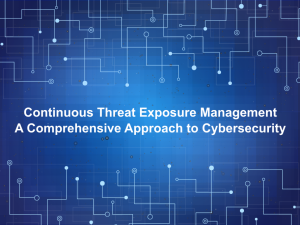Every cyberattack has a beginning, middle, and end. But unlike in a movie, the villain does not reveal their plan; they execute it in silence. The Cyber Kill Chain exposes that silence, breaking an attack into seven stages that defenders can intercept before the damage is done.
Lockheed Martin’s Cyber Kill Chain breaks down this process into seven distinct stages, providing defenders with the opportunity to detect, disrupt, or neutralize a threat at every stage. Rather than reacting to breaches after they occur, cybersecurity teams can leverage this framework to see the full picture of how an attack develops and where it can be stopped.
- Reconnaissance – The Silent Hunt
The first stage begins long before any intrusion. Attackers quietly collect intelligence about their targets, scanning networks, analyzing employees’ digital footprints, and probing vulnerabilities. Think of this as digital stalking. The goal is simple: gather enough data to exploit weaknesses later. Detecting reconnaissance early through threat intelligence or abnormal scanning patterns can cripple an attacker’s momentum before they strike.
- Weaponization – Building the Bait
Once information is gathered, attackers craft their tools. This could be a malicious payload hidden in a seemingly harmless file, or a customized exploit built to bypass a company’s defenses. The danger here is invisibility; defenders rarely see this stage in real time. However, understanding it helps organizations predict what kinds of attacks they might face based on their industry or infrastructure.
- Delivery – Launching the Attack
Here is where the assault begins. The malicious payload is delivered through phishing emails, infected USB drives, or compromised websites. This is often the attacker’s first direct interaction with the target. Robust email security, sandboxing, and employee awareness can intercept this step, stopping the attack before it ever reaches internal systems.
- Exploitation – Breaking the Barrier
When the payload is executed, exploitation begins. Attackers exploit the identified vulnerability to gain initial access. This could mean exploiting outdated software, weak passwords, or unpatched applications. This is a crucial turning point, the transition from preparation to infiltration. Endpoint protection and real-time vulnerability management can make this stage far more difficult for intruders.
- Installation – Establishing a Foothold
Once inside, attackers install malware to maintain access, often creating backdoors or persistence mechanisms to survive system reboots and security scans. The longer this stage goes undetected, the deeper the compromise. Behavioral analysis and endpoint detection systems (EDR) are vital for spotting these hidden implants early.
- Command and Control (C2) – The Hidden Link
At this stage, attackers establish communication with their compromised system, allowing remote control. They may use encrypted channels, legitimate services, or even cloud platforms to mask their activity. Defenders can monitor unusual outbound traffic, DNS anomalies, or beaconing patterns to identify and sever this connection, effectively cutting the attacker off from their own operation.
- Actions on Objectives – The Endgame
Finally, the attacker acts on their goal: stealing data, encrypting files for ransom, or disrupting operations. Every step before this has been prepared for this moment. Even if this stage is reached, having strong incident response plans, encrypted storage, and network segmentation can minimize damage and aid recovery.
Turning Understanding into Defense
The power of the Cyber Kill Chain lies in foresight. By learning how attackers think and operate, organizations can transform reactive defense into strategic prevention. Each stage of the chain represents both vulnerability and an opportunity, and the faster defenders respond, the more control they reclaim.
At Terrabyte, we believe that understanding the enemy’s playbook is the first step toward rewriting it. By mastering frameworks like the Cyber Kill Chain, businesses can stay ahead, predicting, preventing, and outsmarting cyber threats before they strike.
Reference:
Lockheed Martin. (n.d.). Cyber kill chain. Retrieved from https://www.lockheedmartin.com/en-us/capabilities/cyber/cyber-kill-chain.html




